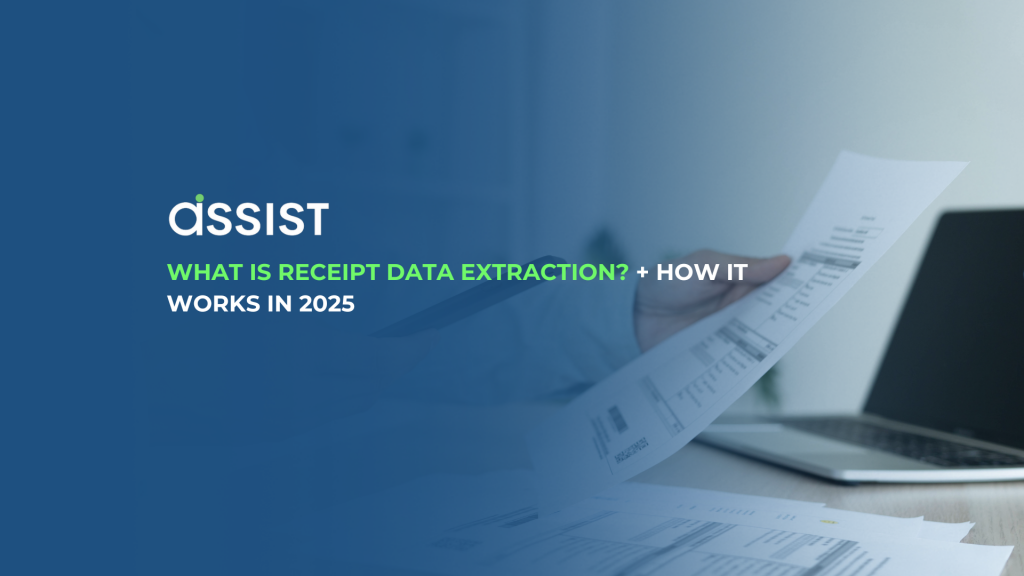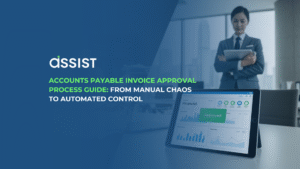Even in today’s digital-first world, receipts remain critical business documents. They provide essential proof for accounting, audits, reimbursements, and tax compliance — especially in industries like retail, logistics, and professional services.
But manually entering receipt data is time-consuming, prone to errors, and difficult to scale. That’s where receipt data extraction comes in — a smarter, automated way to turn printed or digital receipts into structured data using OCR (Optical Character Recognition) and AI.
What is Receipt Data Extraction?
Receipt data extraction is the process of automatically identifying and capturing key information from receipt images — including merchant name, purchase date, total amount, taxes, line items, and more.
Rather than wasting hours on manual entry, businesses use AI-powered tools to process receipts in bulk, feeding the data into accounting systems, expense tools, or e-invoicing platforms. It’s fast, scalable, and crucial for digital transformation.
How Receipt Data Extraction Works
Let’s break down the extraction pipeline step by step:
1. Image Preprocessing
Before any data can be extracted, the image must be cleaned. This includes correcting skew, removing noise, enhancing contrast, and cropping unnecessary elements — all to improve OCR accuracy.
2. OCR Text Recognition
OCR engines like Tesseract, Azure Form Recognizer, or Google Vision AI scan the image and convert printed characters into machine-readable text.
3. Parsing & Post-Processing
The raw text output is messy — so rule-based or ML-driven parsers identify and isolate fields like “Total,” “Tax,” “Merchant Name,” etc.
4. Field Mapping
This step organizes the parsed data into structured fields (e.g., JSON or CSV format) ready for use in your systems.
5. Validation & Error Handling
Finally, rules are applied to catch errors (e.g., negative totals, VAT mismatch). Some systems allow for human review in edge cases.
📌 The result: Clean, accurate, and actionable data — without manual typing.
Top Receipt OCR Tools Compared
Here’s how some of the most popular tools stack up:
| Tool | Accuracy | Format | Language Support | Best For |
|---|---|---|---|---|
| Azure | ~85–90% | JSON | 7+ | Scalable cloud-based workflows |
| Klippa | ~95% | JSON, CSV | 100+ | UI-first automation integration |
| Taggun | ~97% | JSON | 40+ | Real-time parsing & fraud alerts |
| Veryfi | 99%+ | JSON | 91 currencies | Compliance & mobile capture |
| Tesseract | 70–90% | Plain text | 100+ | DIY, open-source, budget projects |
🔍 Tip: Choose based on integration ease, field accuracy, localization needs, and whether you want a no-code or custom solution.
Common Challenges in Receipt Extraction (and Solutions)
While receipt data extraction is powerful, it isn’t always straightforward.
📸 Image Quality
Poor lighting, blurry scans, and wrinkles affect OCR. Use image-enhancing software or mobile scanning SDKs.
📄 Layout Variations
Receipts vary by store, region, or currency. Choose tools trained on diverse receipt datasets or that use layout-agnostic models.
🌍 Multilingual Receipts
Global companies deal with multiple languages and currencies. Opt for tools like Veryfi or Klippa with localization support.
🔠 OCR Errors
Mislabeled characters (e.g., “8” vs “B”) happen. Use confidence scores and post-processing validation to minimize impact.
Why Businesses Are Automating Receipt Extraction
This technology isn’t just about convenience — it’s a strategic move with measurable ROI.
✅ Time Savings: Reduce processing time by 90% or more
✅ Fewer Errors: Minimize manual mistakes in data entry
✅ Cost Reduction: Cut down on outsourcing or in-house admin work
✅ Regulatory Compliance: Especially in countries with mandatory e-invoicing (like Malaysia)
✅ Improved Workflow: Data flows automatically into ERP, accounting, or invoicing systems
The result? Faster operations, cleaner records, and more productive teams.
How Assist.biz Helps You Get There Faster
Assist.biz offers powerful tools that simplify document automation — and yes, that includes receipt data extraction. Whether you’re an SME or a large enterprise, Assist.biz helps you:
-
Seamlessly capture and convert receipt data
-
Align with Malaysia’s e-invoicing compliance requirements
-
Integrate with your existing systems
-
Save time on reconciliation and reporting
🧩 Think of it as plugging intelligent automation right into your current workflow — without the steep learning curve.
Ready to Stop Typing and Start Automating?
If you’re still manually processing receipts, it’s time to make a change.
Join hundreds of businesses already benefiting from automation. Get started today with Assist.biz — and take the manual effort out of your financial operations.
👉 Register now on Assist.biz to streamline your document workflows.





